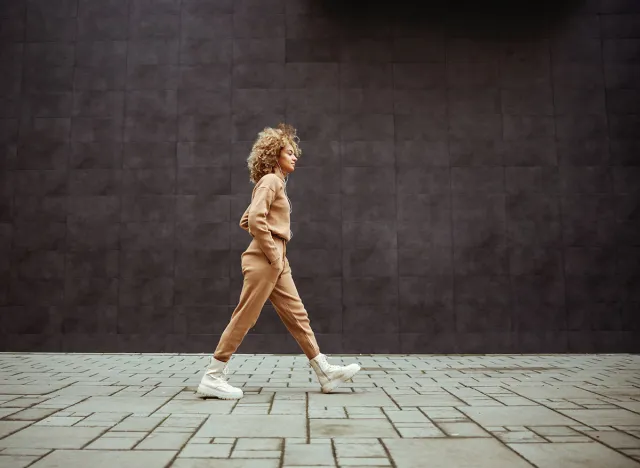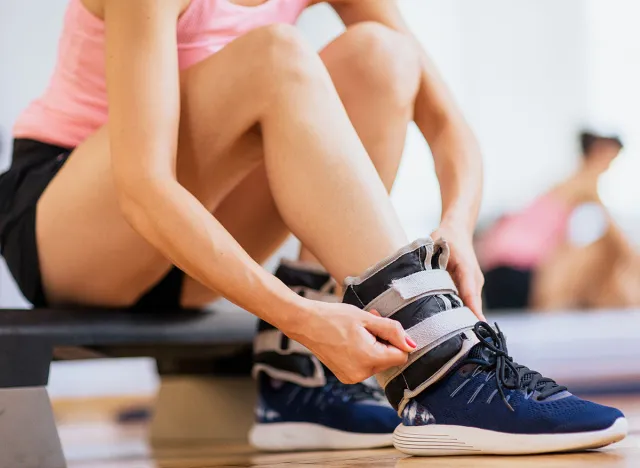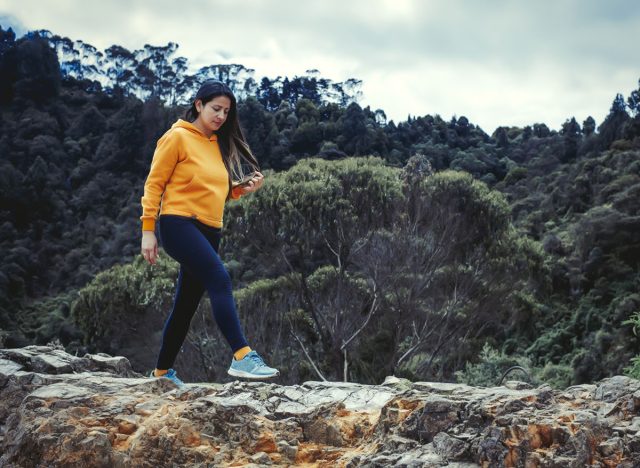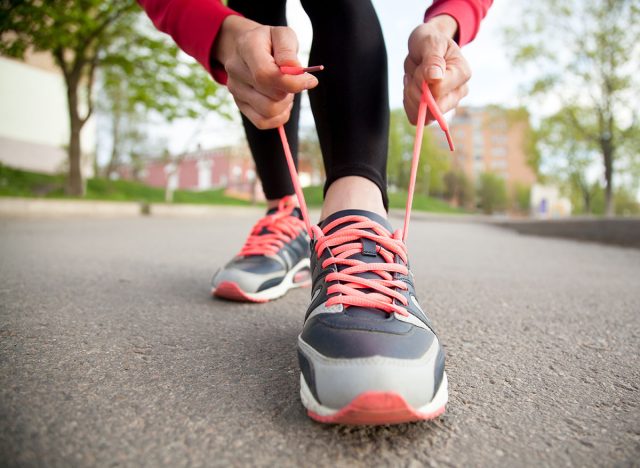5 Walking Tips for Weight Loss From Camila Cabello's Personal Trainer

You don't need to spend hours in the gym every day to lose weight. In fact, incorporating a daily walk into your routine can help you drop pounds effortlessly, according to celebrity fitness trainer and health and wellness expert Jenna Willis. The Los Angeles-based fitness expert, whose clients include Camila Cabello and Lala Kent, recently spoke to Body Network, offering five tips on how to majorly up your walking game so you can lose weight fast.
Walk on an Incline

Are you walking mostly on flat surfaces? Try walking on an incline instead, suggests Willis. "For every 1 percent incline grade, you burn approximately 12 percent more calories than walking on flat terrain," she reveals. The slight increase in elevation also leads to greater muscle activation and higher heart rate. "There is even an after-burn effect where your body continues to burn calories AFTER your walk is complete because the muscles are working on rebuilding and repairing," she adds.
RELATED: From Drunken Mess to Daily Bliss: My 90-Day Transformation
Do Intervals

Next, Willis suggests breaking your walk into intervals, "brisk walking to a slower recovery walk," she says. "By breaking up your walks into intervals, you end up pushing your body harder when you up the pace, ultimately making your heart beat faster and your muscles work harder.: This increased effort requires more energy, which means more calories are burned. "By alternating between brisk walking and recovery walking, you keep your heart rate elevated throughout the entire workout which leads to a higher overall calorie burn compared to walking at a steady pace. Additionally, this interval training style can help improve your cardiovascular fitness and endurance over time," she adds.
Add Resistance – Like a Weighted Vest or Ankle Weights

Willis also recommends adding resistance in the form of a weighted vest or ankle weights. "When you wear a weighted vest or add some ankle weights to your walk, you are carrying extra weight as you walk, making your muscles work harder to move your body forward," she says. "Similar to adding an incline, your muscles need more energy, which equals you burning more calories. While putting a higher demand on your body, in turn, you are burning more calories and building strength simultaneously!"
Change the Terrain

Another way to maximize your walk is to change the Terrain. "Walk on the beach, a hiking trail, etc," Willis recommends. "By taking your walk off the sidewalk and moving to sand or hiking on uneven trails, your muscles have to adapt to the changing surface. They have to work harder to keep you balanced and moving forward. It is like giving your muscles an extra challenge that they are not used to during regular walking," she explains. Specifically, it activates stabilizer muscles that keep your joints aligned and balanced. "These stabilizer muscles, along with primary movers like quadriceps, hamstrings, and calf muscles, work harder to navigate the challenging terrain. In turn, this heightened muscle activation placed on your body results in you burning more calories than you would during regular walking on flat terrain," she explains.
Change Directions

Finally, Willis recommends changing directions, specifically walking backward. "By switching up your direction, you force new patterns. When you walk forward, your body is accustomed to the movement (we do it daily), and certain muscles, like your quadriceps and calf muscles, do most of the work. However, when you change directions by walking backward, you force different muscles to take on the workload, such as your hamstrings and glutes," Willis says. "By making this change, your brain must adapt to the altered motor commands required to execute the movement. This neuromuscular adaptation involves increased neural firing and communication between muscles, which can elevate energy expenditure. This change in muscle engagement and brain power increases the overall demand on your body, leading to more calories burned. It is like giving your muscles a surprise workout they are not used to, causing them to work harder and expend more energy."
💪🔥Body Booster: Try one of these tips each day on your walk. At the end of the week, ask yourself if they made a difference.




